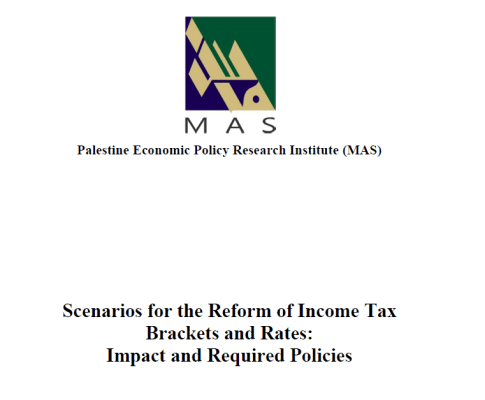Scenarios for the Reform of Income Tax Brackets and Rates: Impact and Required Policies
Tax policy is one of the most important tools through which states can achieve a form of social justice, and improve the living conditions of the most marginalized groups through reduced poverty and inequality. Tax policies can contribute to achieving social justice in more than one way:
- Increasing budget allocations for public spending, especially in the social sectors: education, health, and social protection.
- Redistribution of wealth between high- and low-income groups, as well as through the introduction of a progressive income tax.
- Supporting accountable governance and representation by giving taxpayers an opportunity to comment on how taxes are spent.
- Changing the harmful practices of individuals and companies through the ‘re-pricing’ of goods.
- Stimulating economic activity to support national development plans and adopting industrial policies that help create job opportunities and provide goods and services.
This study aims to identify the constituents of Income Tax Law No. 8 of 2011, covering the number and extent of income tax brackets for individuals, companies, and cases of exemptions, in order to determine whether this Law succeeded in fulfilling the financing, social and economic goals announced by the Ministry of Finance in 2011. This study acquires additional significance in the Palestinian context, given the limited evaluative macroeconomic power that the Palestinian government can exercise in monetary and trade policy, compounded by its inability to control borders and the absence of a Palestinian currency. Thus, the study proposes a number of scenarios for taxing the income of individuals and companies in order to study its various effects on GDP, as well as the private consumption habits of individuals with incomes that lie within proposed income tax brackets. It also examines effects on total private consumption, total savings, government revenues, local employment, and value-added taxes across various economic sectors including agriculture, manufacturing, construction, transportation and storage, and services.
The study relied on analyzing and calculating the impact of various scenarios using the “Mitigation, Adaptation and New Technologies Applied General Equilibrium (MANAGE)” model. This is a dynamic, iterative simulation model used by a country to reflect the relationship between all sectors in the local economy and the external economy. It is a derivative of the Computerized General Equilibrium (CGE) model. The CGE model is typically used to simulate different scenarios for the application of economic policies, and their effects on primary, macroeconomic indicators. Therefore, this model makes it possible to put forward different income tax scenarios for different individuals and economic activities. In order to assess the effects of different income tax scenarios, the model used the Social Accounts Matrix (SAM) issued by PCBS. This is based on the Household Expenditure and Consumption Survey of 2017, which is considered a determinant of the accuracy of the results of the study, given changes that occurred in the data within this matrix during the past four years.

